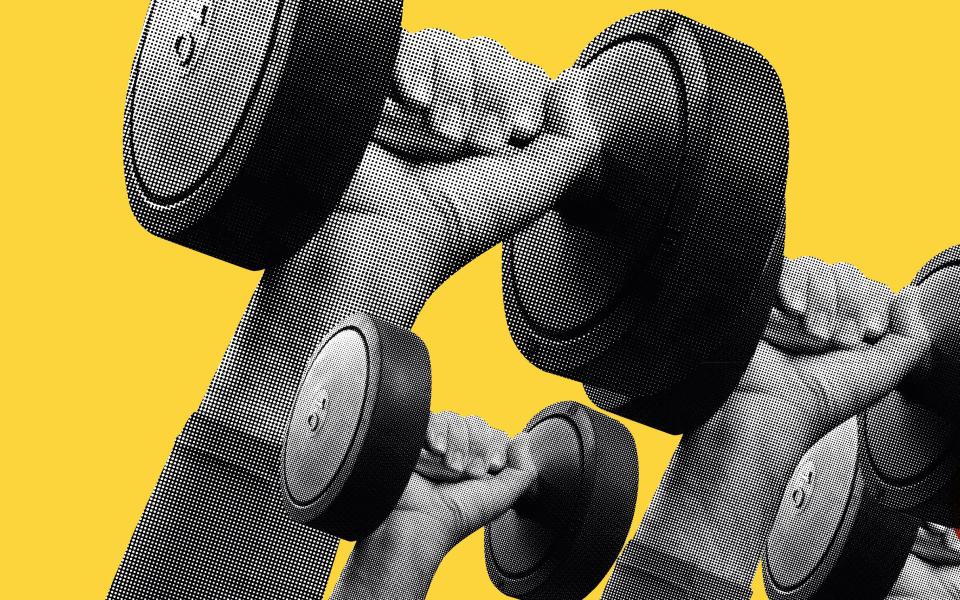Sore muscles after midlife strength training? Here's how to soothe the ache

There are lots of good things about ageing – accumulated wisdom, looking good in tweed, not having to care about who’s big on TikTok – but training-related joint pain is absolutely not one of them. In your youth, you can bounce back from almost any training session in hours, but as you age, the aches start to last longer than the endorphin rush.
What can you do about it? First, consider whether it’s a short or long-term problem. If you’ve recently upped your exercise levels, or radically changed what you do, there’s a chance the aches you’re experiencing are just delayed onset muscle soreness, which will improve as you get used to training (and perhaps warm up better). If you’re dealing with something more serious, though – including the symptoms of early onset arthritis – now’s the time to take action.
First, rethink what you’re doing during the hours when you aren’t in the gym. If you’re hunched at a desk all day, chances are you’re cultivating tight muscles that’ll contribute to joint and back pain. Set up your workstation so that you can sit with your back straight and feet flat on the floor as you work, and set a 25-minute alarm – it’s about the longest you’re likely to be concentrating for anyway – to remind you to get up and move around every so often. At home, sit on the floor rather than slouching on the couch occasionally – the (mild) discomfort will keep you in motion, rather than curled into an awkward position.
It might not be the first thing you think about when it comes to aches, but keeping a handle on stress is also important. Excess levels of the stress hormone cortisol can drive down the production of collagen, a compound necessary for healthy joints, and between work worries and the state of, er, everything else, it’s easy to be stressed all the time.
Breathing exercises and meditation apps might help, but also consider the way you react to problems: medical professionals point out that what’s known as a strong internal ‘locus of control’ can often be a benefit in stressful time, reminding you that, even if you’ve lost your job (for instance) you’re entirely capable of getting another one.
Other times – if someone you know is struck down by serious illness, for instance – the same mindset can cause unnecessary and avoidable stress. If something moderately bad happens, focus on what you do next. If something terrible happens, remind yourself that you can’t control everything.
As you finally hit the gym, don’t leap straight into the hard stuff.
“An appropriate warm-up is extremely important,” explains Aleksandra Valcheva of Inspired to Move.
“Include dynamic and mobilising drills specific to the muscle group you are working to allow blood flow and activation – this will ensure you are working to your full range of motion and decrease risk of injury.”
If you’re training your upper body, for instance, you should warm up your wrists and forearms. One drill is to get down on all fours, knees underneath your hips and hands underneath the shoulders, fingers pointing forward, and begin slowly rocking back and forth.”
For a full-body option, try the slow burpee – it’ll loosen up your hips, knees and groin, while getting your heartrate up for the more intense stuff.
When it’s time to train, first think about what you’re ruling out. If you’re like most middle-aged people, moving your hands and arms behind the plane of your shoulders during a exercise, like a behind-the-neck overhead press, puts them in an unstable position that could lead to injury. Avoid these – at least until you can get through a few sets of wall angels with impeccable form.
Next, reconsider your cardio. Excess weight can put added stress on joints, particularly knees, causing pain and worsening early damage from arthritis.
High-impact moves like sprinting, tuck jumps and burpees can be great for fat loss – and they’re kit-free, which makes them ideal for crowded HIIT classes and bootcamps – but repeated impacts aren’t ideal.
Switch at least some of your conditioning for movements that are low or no-impact – rowing machines, stationary bikes, swimming or even the Versaclimber are ideal.
On these, you can go all-out with minimal risk – try 20 seconds of ‘sprinting’ followed by 40 seconds of low-effort movement, repeated 10 times, for a furious fat-burning workout with minimal impact.
When it comes to actual weight training, focus on functional movements such as squats, deadlifts and presses – avoiding hitting failure or using momentum to ‘cheat’ your way to more reps, both of which put excess stress on your body.
If you're training with good form, reassure yourself that you’re actually preventing long-term aches, not causing them.
An analysis of research published in the journal Rheumatology suggests that strengthening the muscle groups around affected joints improved function and eased pain in people with osteoarthritis, while other studies suggest that training can reduce inflammation, pain, and ‘morning stiffness’, compared with basic range-of-motion exercises.
Remember: a bit of minor soreness now might help you avoid the real pain of old age.
After a workout make sure you recuperate properly by stretching, and taking a hot bath in Epsom Salts, known to be effective at soothing muscle aches and pains.

